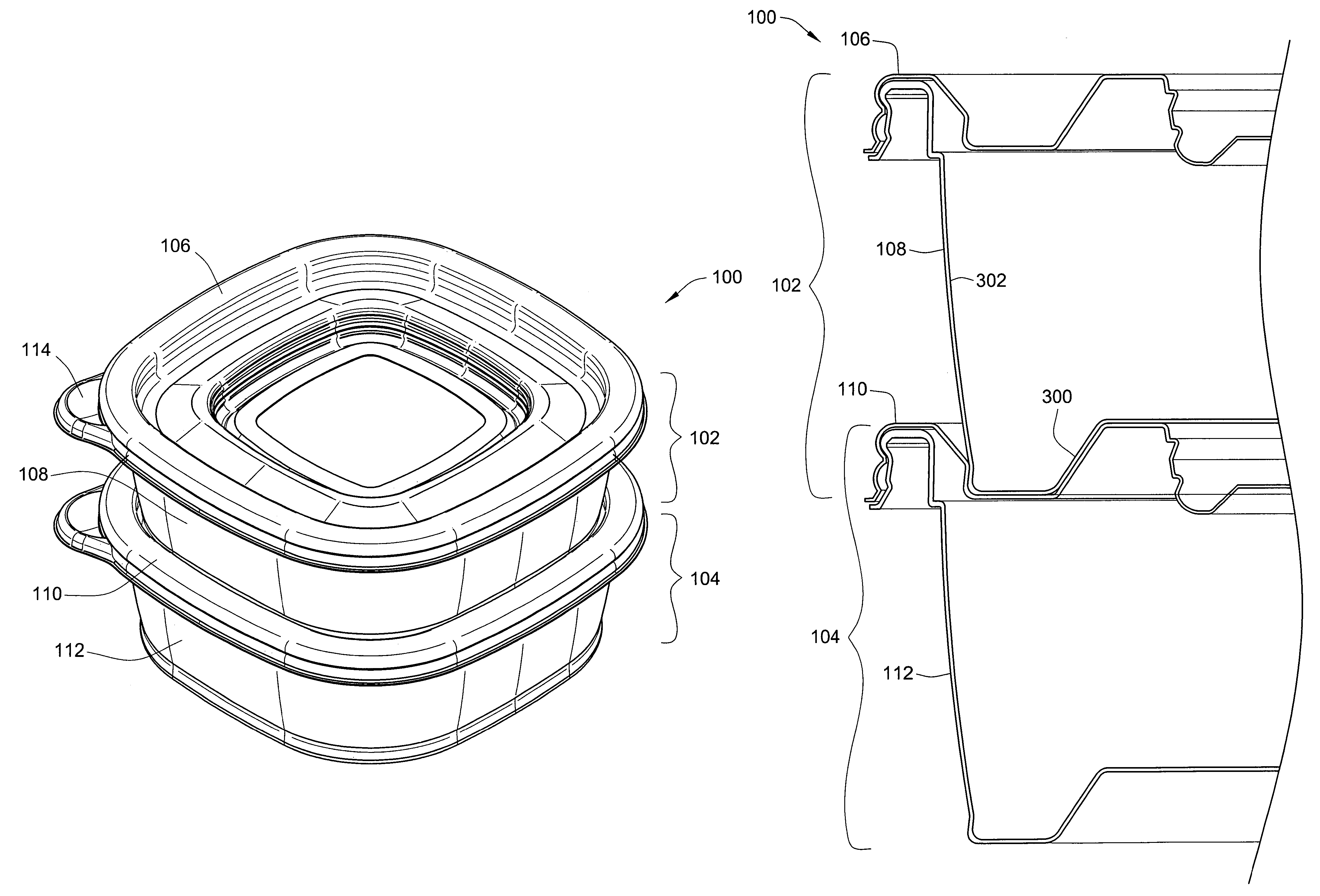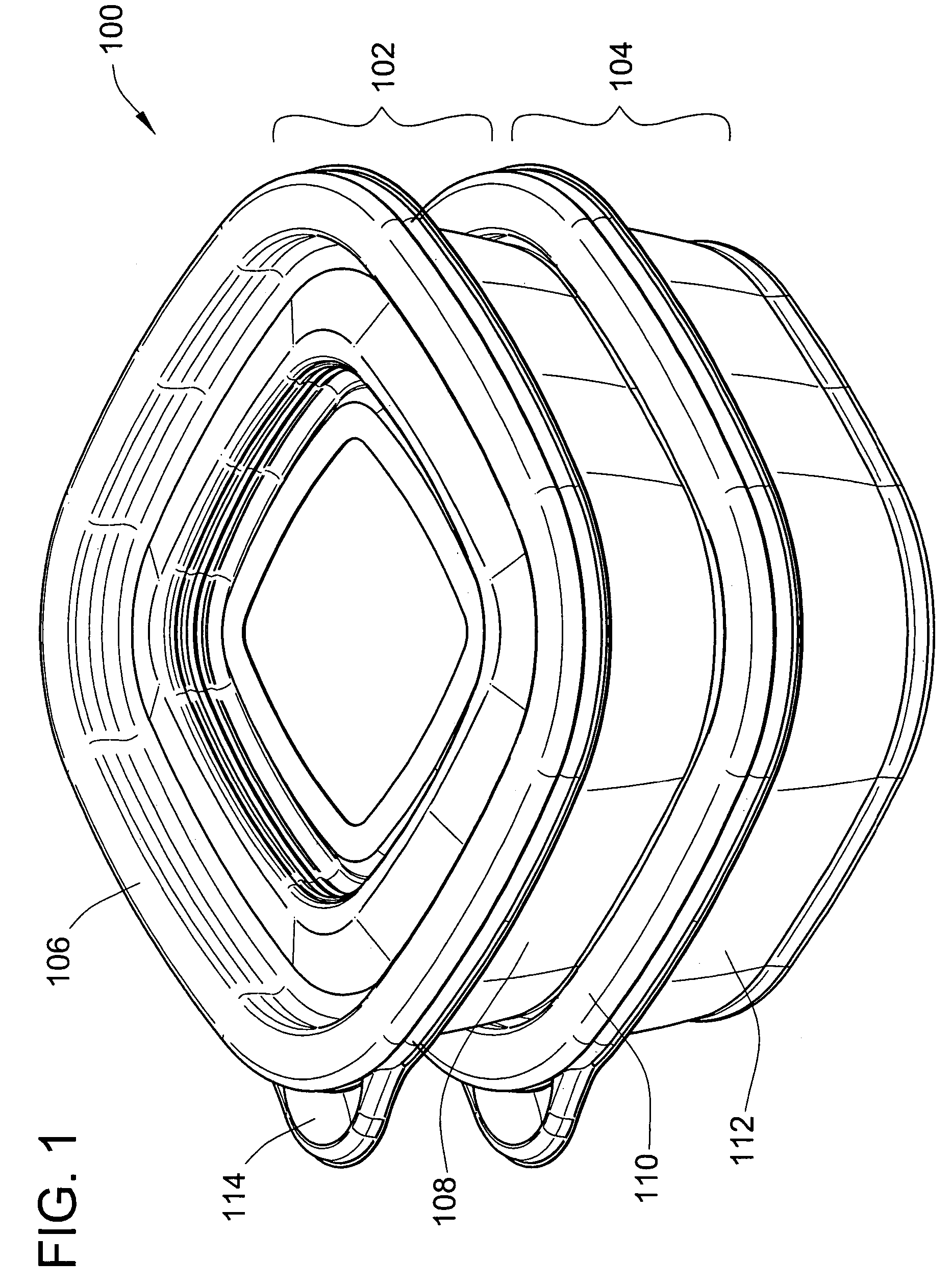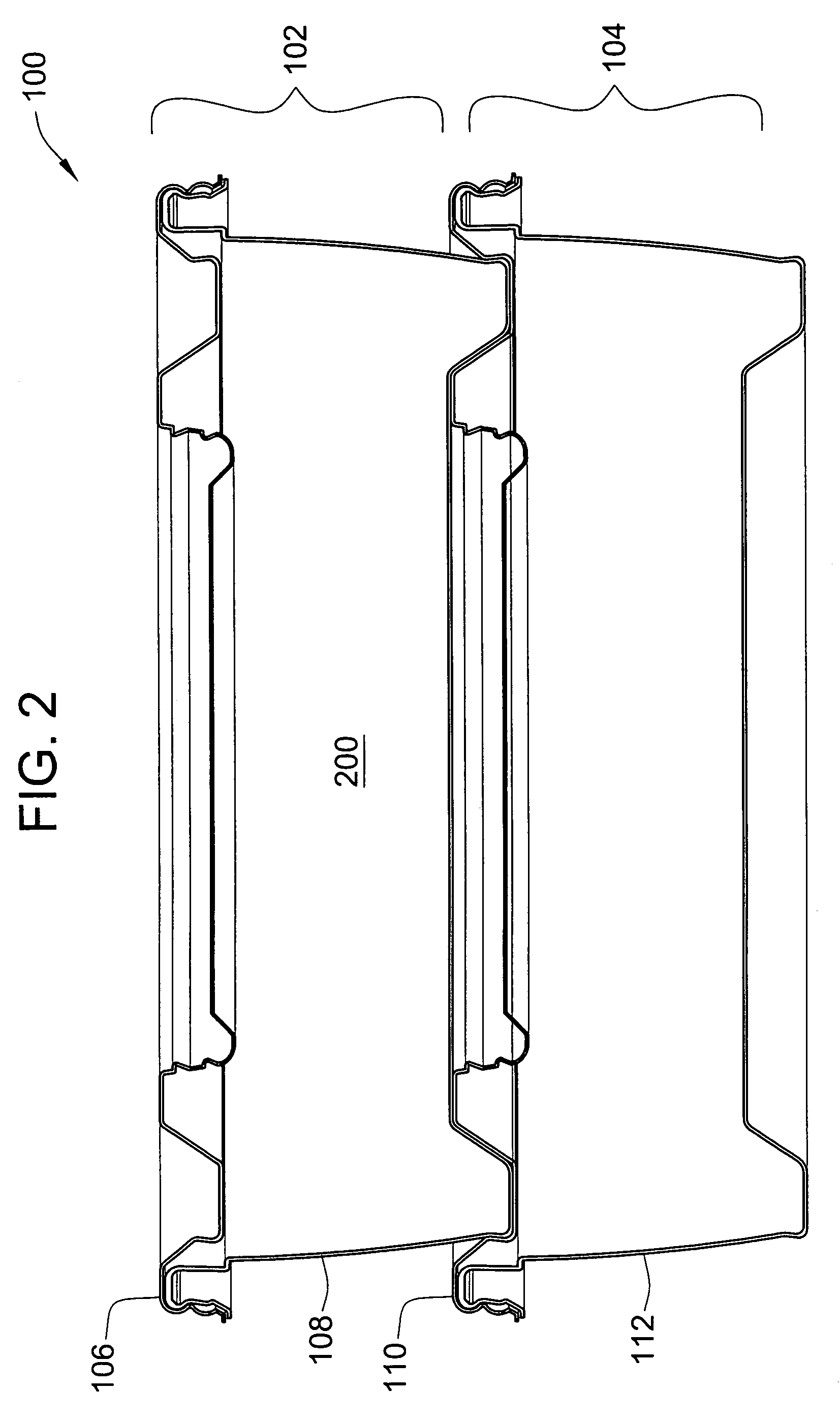Stacked containers
a technology for stacked containers and containers, applied in the field of containers, can solve the problems of occupying a great deal of space for unused containers, difficult to find a matching base and cover in a disorganized drawer, and still difficult to match a base and cover with a cover, so as to achieve convenient manufacturing and satisfactory visibility of container contents
- Summary
- Abstract
- Description
- Claims
- Application Information
AI Technical Summary
Benefits of technology
Problems solved by technology
Method used
Image
Examples
Embodiment Construction
[0031]Turning to the drawings, wherein like reference numerals refer to like elements, a first embodiment of the present invention is illustrated in FIGS. 1 through 5. A locking container stack 100 includes, in the example of FIG. 1, two sealed containers 102 and 104. Container 102 includes a flexible cover 106 sealingly engaged to a base 108, while container 104 similarly includes a cover 110 sealingly engaged to its base 112. To form the locking container stack 100, the top surface of cover 110 is locked to the bottom surface of base 108. Locking containers 102 and 104 together make the resultant stack 100 more structurally rigid and thus less precarious than a traditional, non-interlocked, stack of containers would be.
[0032]The container cover 106 can include at least one gripping tab 114 to facilitate removal of the cover 106 from the container base 108. In some embodiments, the gripping tab 114 includes one or more cross-ribs or a textured surface to improve a user's grip on th...
PUM
 Login to View More
Login to View More Abstract
Description
Claims
Application Information
 Login to View More
Login to View More - R&D
- Intellectual Property
- Life Sciences
- Materials
- Tech Scout
- Unparalleled Data Quality
- Higher Quality Content
- 60% Fewer Hallucinations
Browse by: Latest US Patents, China's latest patents, Technical Efficacy Thesaurus, Application Domain, Technology Topic, Popular Technical Reports.
© 2025 PatSnap. All rights reserved.Legal|Privacy policy|Modern Slavery Act Transparency Statement|Sitemap|About US| Contact US: help@patsnap.com



